As you watch your dog trot across the yard or splash into a puddle, have you ever taken a close look at their paws? You might spot a curious feature, a soft membrane stretching between their toes. While nearly all dogs have some degree of webbing, certain breeds stand out with particularly well-developed webbed feet. This isn’t just a quirky physical trait; it serves a real and remarkable purpose.
Dogs with pronounced webbing between their toes are often strong swimmers, thanks to this natural paddle-like structure. These breeds were historically developed for tasks that required excellent traction in muddy terrain, efficient movement through water, or even snow navigation. Whether they were bred to retrieve game from lakes, herd livestock across slippery riverbanks, or work in marshy fields, their webbed feet became a vital tool.
In this article, we’ll explore dog breeds that possess this fascinating feature and how these paws help them perform jobs they were born to do. From loyal retrievers to rugged working dogs, their feet tell a story of adaptation and purpose.
Dog Breeds With Webbed Feet
1. Labrador Retriever
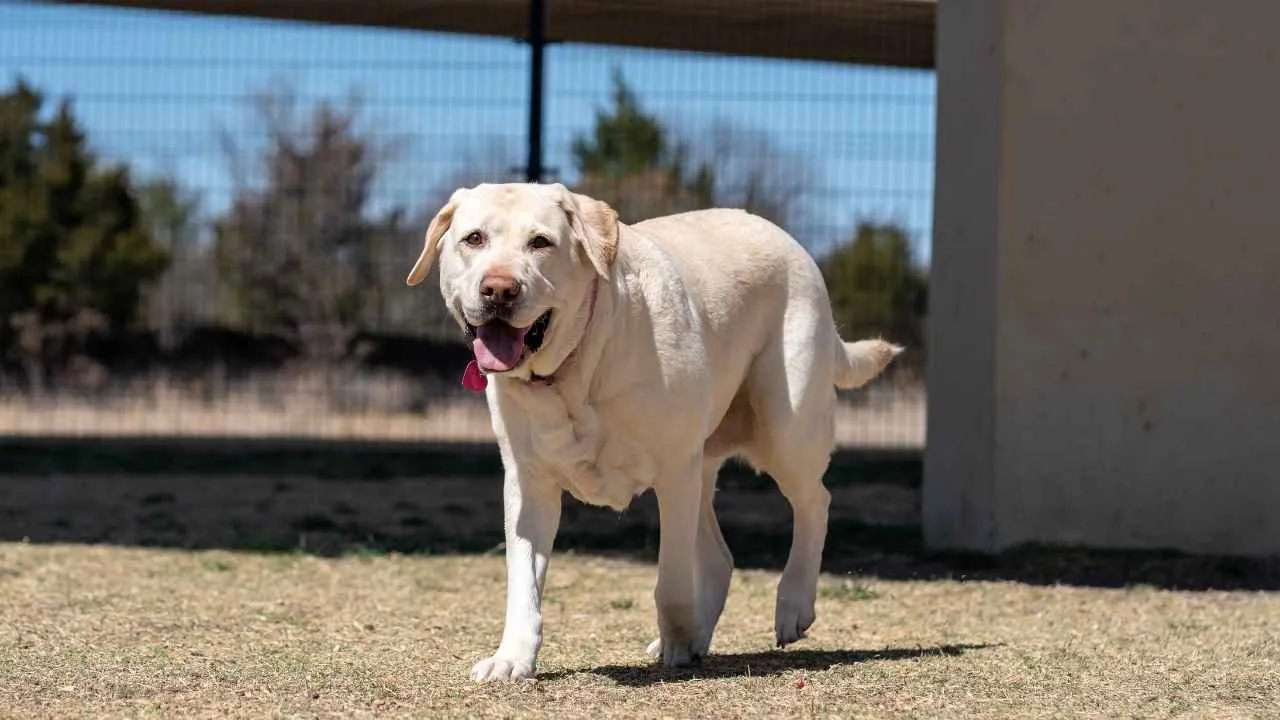
Friendly, dependable, and full of energy, the Labrador Retriever is not only a favorite family dog but also one of the best-known dogs with webbed feet. This is one of the most popular dog breeds. The AKC describes the Labrador Retriever as energetic, sociable, and cheerful. Originally bred for retrieving fishing nets and waterfowl, Labs are natural swimmers.
Their paws, equipped with prominent webbing, give them an edge in the water, perfectly suited for paddling efficiently through lakes or rivers. Whether they’re diving after toys or helping retrieve on a hunt, their webbed feet enhance their aquatic performance.
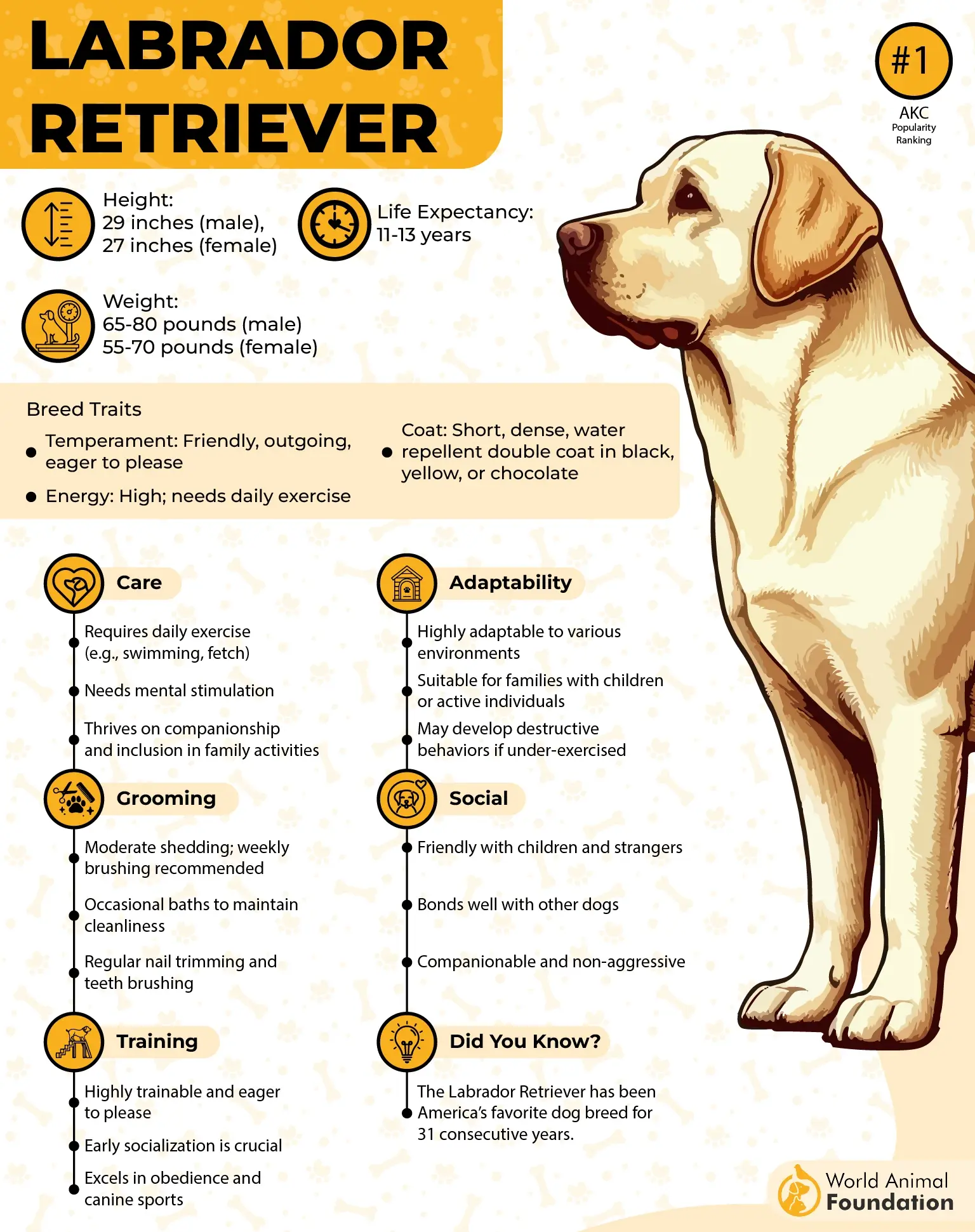
Unique Traits
Labrador Retrievers boast a dense, water-resistant double coat that dries quickly and insulates them during water-based activities. Their broad head, expressive eyes, and constantly wagging “otter tail” all contribute to their charm, but it’s their wide, webbed feet that make them true water-loving athletes.
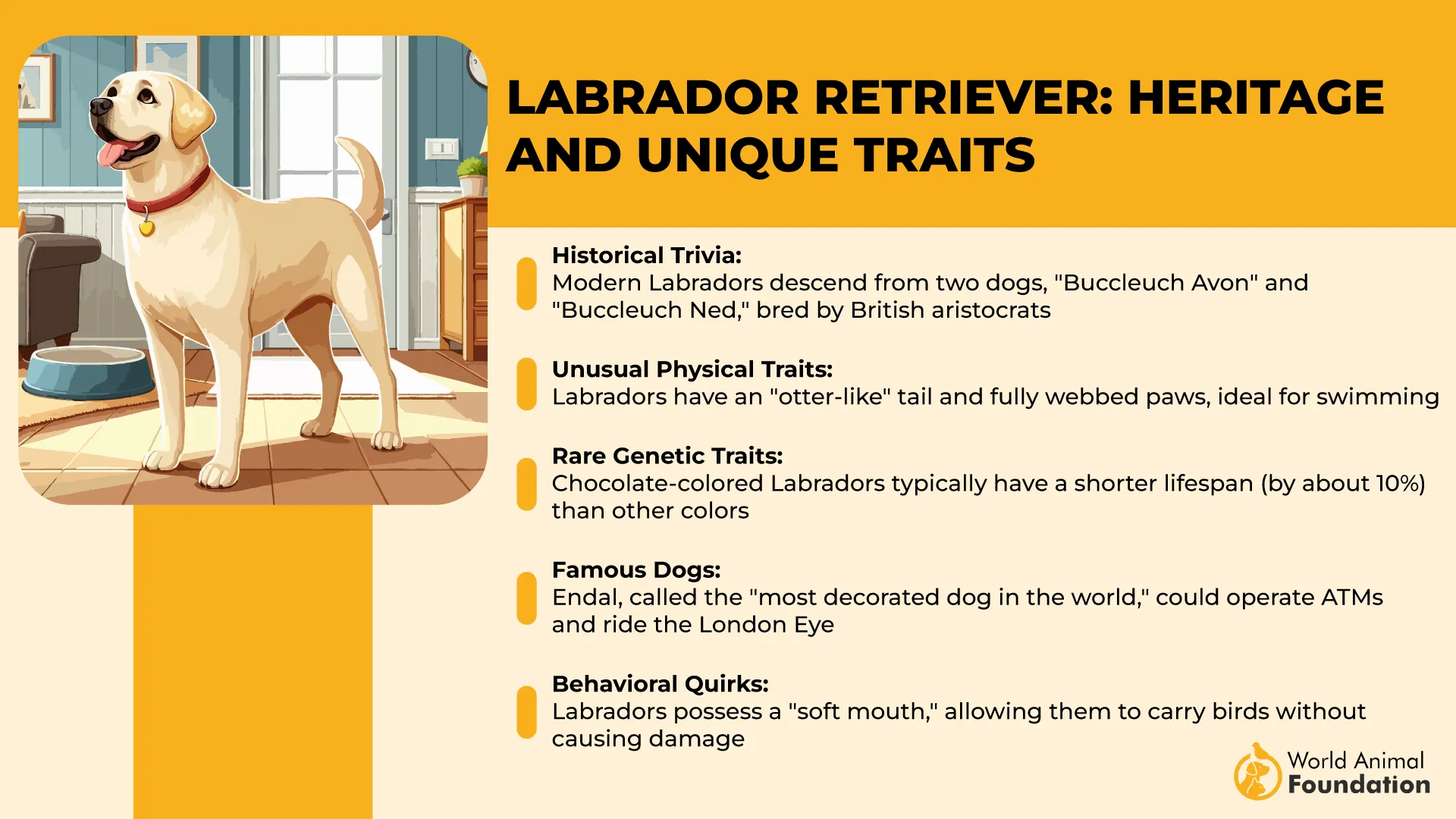
These dogs range from 21.5 to 24.5 inches tall and typically weigh between 55 and 80 pounds, with their athletic build and tireless energy requiring ample exercise and outdoor play.
Fact: Labrador Retrievers were originally bred for retrieving fishing nets and game from water, making their webbed feet a functional and iconic feature.
2. Newfoundland
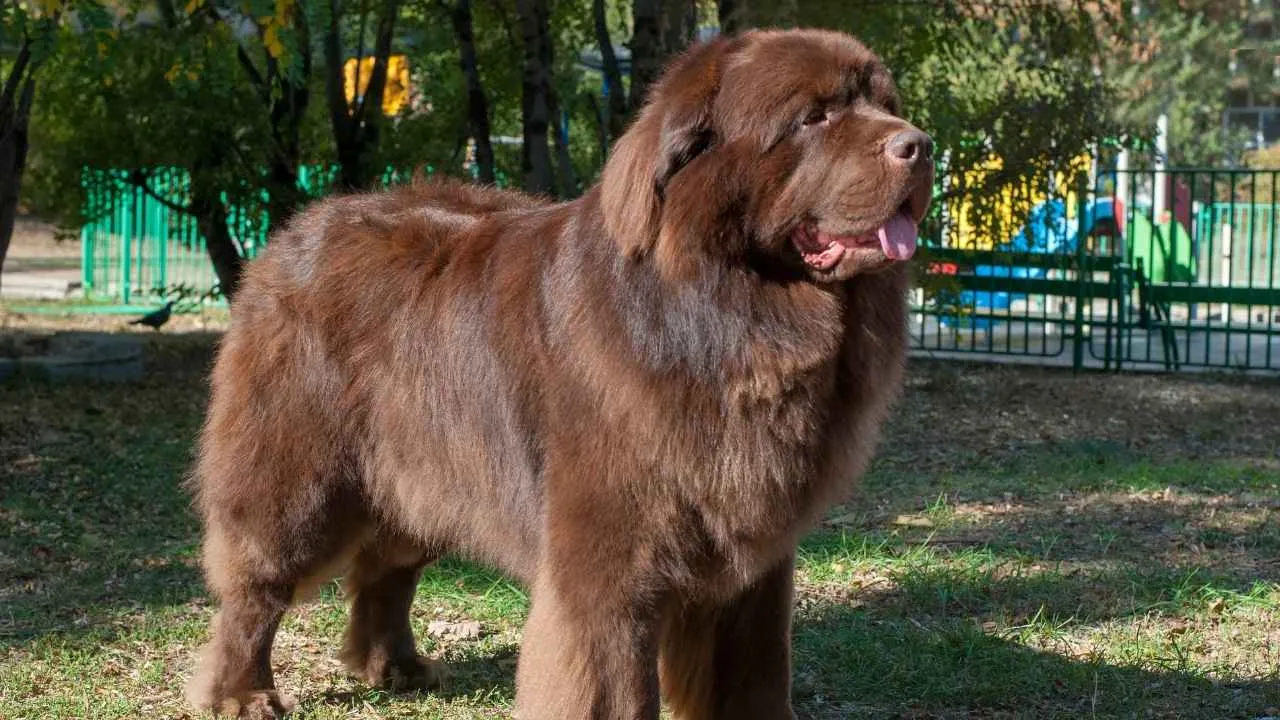
Massive in size but mellow in spirit, the Newfoundland is a gentle, water-loving giant built for aquatic endurance. Historically used aboard Canadian fishing boats, these dogs were famed for their lifesaving prowess, diving into rough waters to pull people to safety.
Purina describes Newfoundlands as having exceptionally pleasant personalities; they are gentle, calm, patient, affectionate, and deeply loyal. Their broad, webbed paws act like natural paddles, allowing them to swim powerfully and with great control. These traits make Newfoundlands one of the strongest canine swimmers and a breed deeply connected to the water.
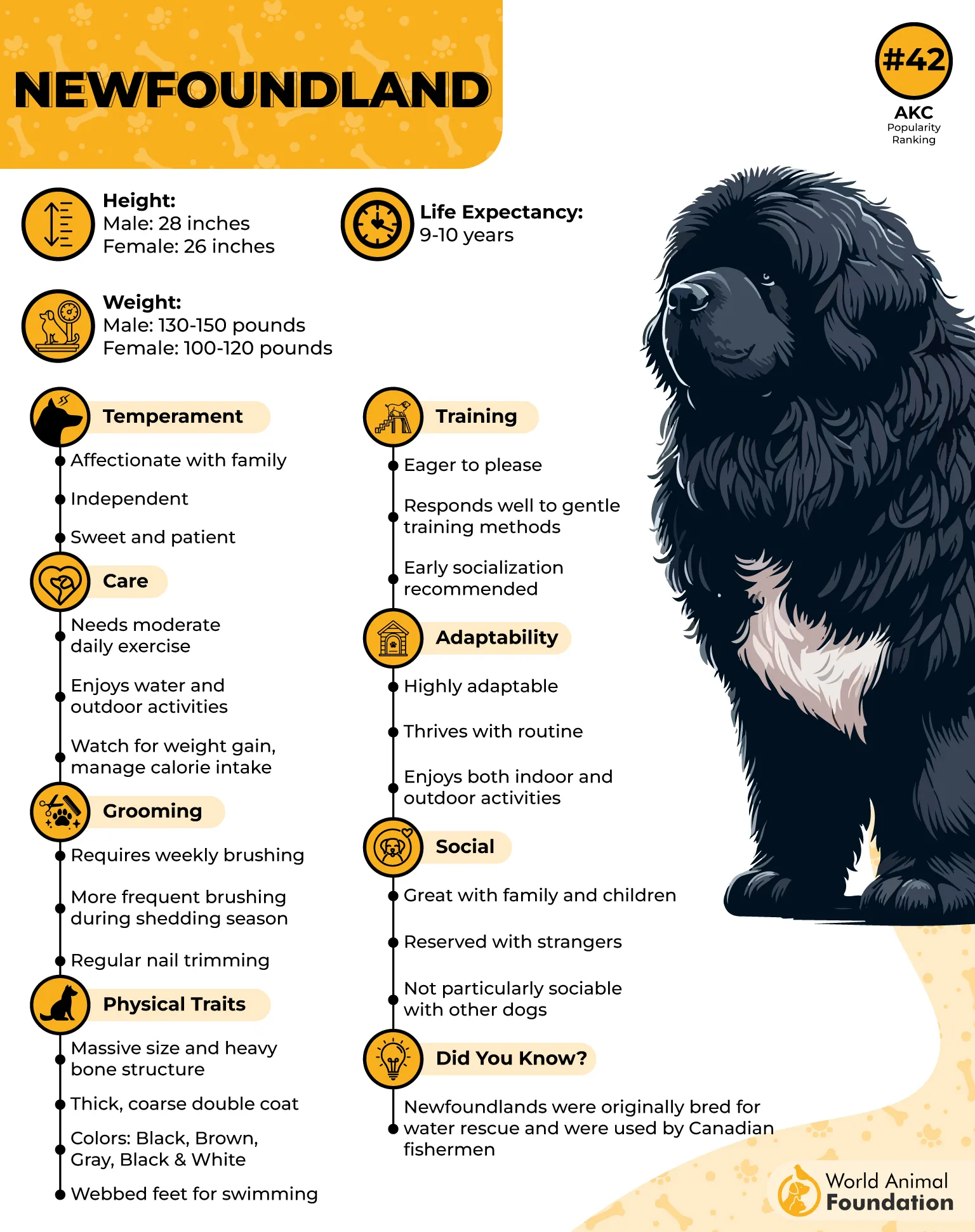
Unique Traits
These loyal dogs stand out for more than just their impressive frame. With thick, water-resistant coats and immense strength, they’re tailor-made for both swimming and cuddling. Their famously sweet temperament has earned them the nickname “nanny dog,” a reputation celebrated in literature like Peter Pan.
They grow rapidly from teddy bear-like puppies into 100+ pound adults and require regular grooming, plenty of space, and an owner ready for drool, splashes, and XL everything.
Fact: Newfoundlands were once relied upon to perform daring sea rescues thanks to their webbed feet and unmatched swimming ability.
3. Portuguese Water Dog
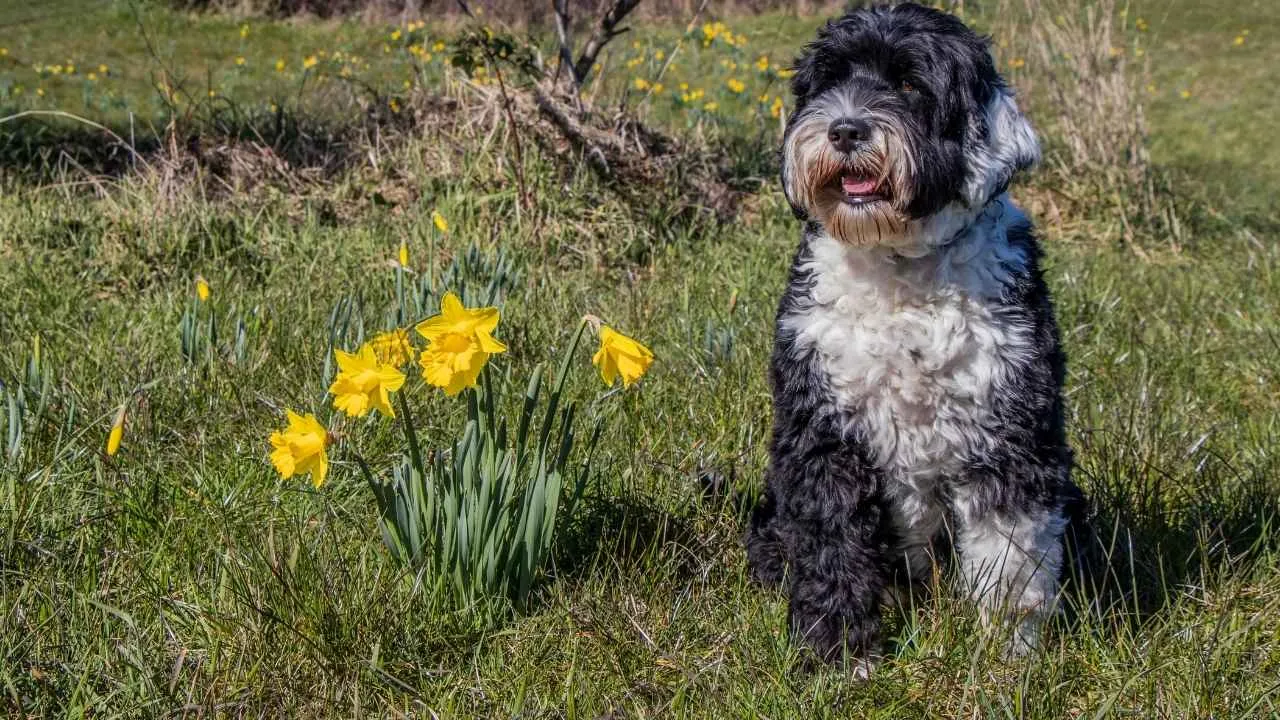
The Portuguese Water Dog is a spirited and energetic breed that lives up to its aquatic name. Bred along the coastal waters of Portugal, these dogs were originally tasked with retrieving nets, herding fish into them, and even delivering messages between boats.
Their physical build, paired with their sharp intelligence and loyal temperament, made them indispensable to fishermen. PetMD suggests that the cheerful and loving Portuguese Water Dog can become a devoted family companion when provided with early training, sufficient exercise, and consistent attention.
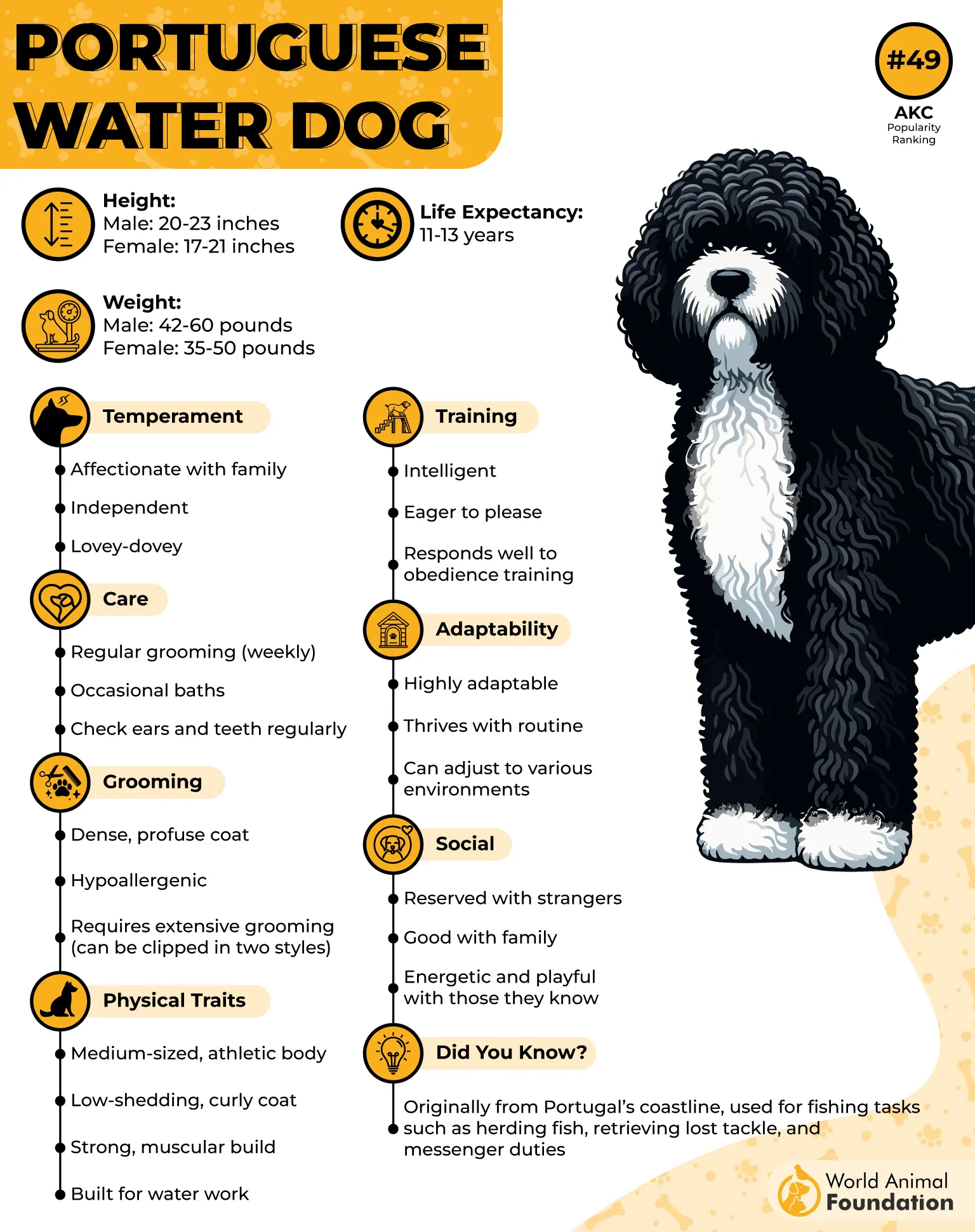
Unique Traits
These medium-sized dogs typically weigh between 35 and 60 pounds and stand up to 23 inches tall. Their dense, curly coats are waterproof, which helps them stay buoyant and warm during long periods in the water.
Their webbed paws function like natural flippers, boosting their swimming efficiency. They’re also hypoallergenic, which adds to their appeal for many families. High in energy and affection, Portuguese Water Dogs thrive in active households that enjoy outdoor adventures.
Fact: Portuguese Water Dogs were bred to assist fishermen along the Portuguese coast, herding fish, retrieving gear, and swimming with impressive stamina thanks to their webbed feet.
4. Chesapeake Bay Retriever
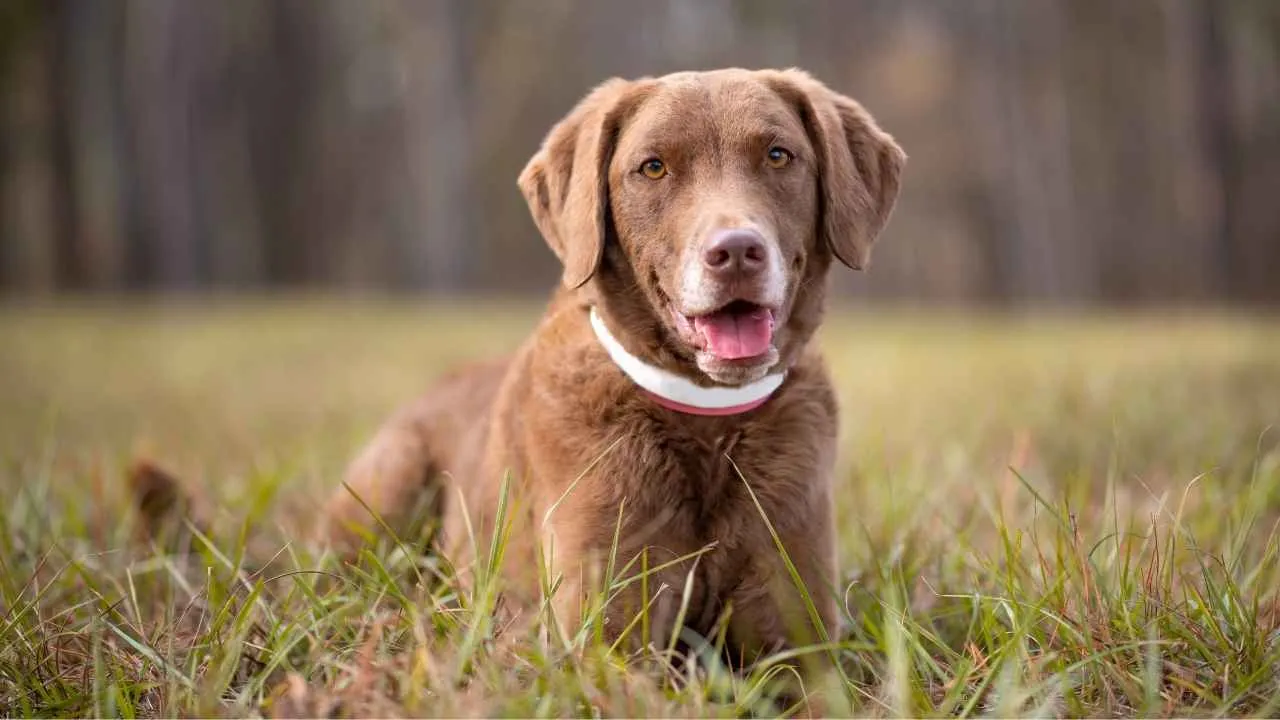
Renowned for their tenacity and strength, the Chesapeake Bay Retriever is a natural swimmer. Bred along the shores of Chesapeake Bay, this breed was designed to retrieve waterfowl in freezing conditions, making their webbed feet an essential asset.
These feet, combined with a muscular frame and remarkable stamina, enable “Chessies” to glide through rough waters with impressive speed and power. WebMD describes Chesapeake Bay Retrievers as cheerful and robust dogs, making them excellent companions.
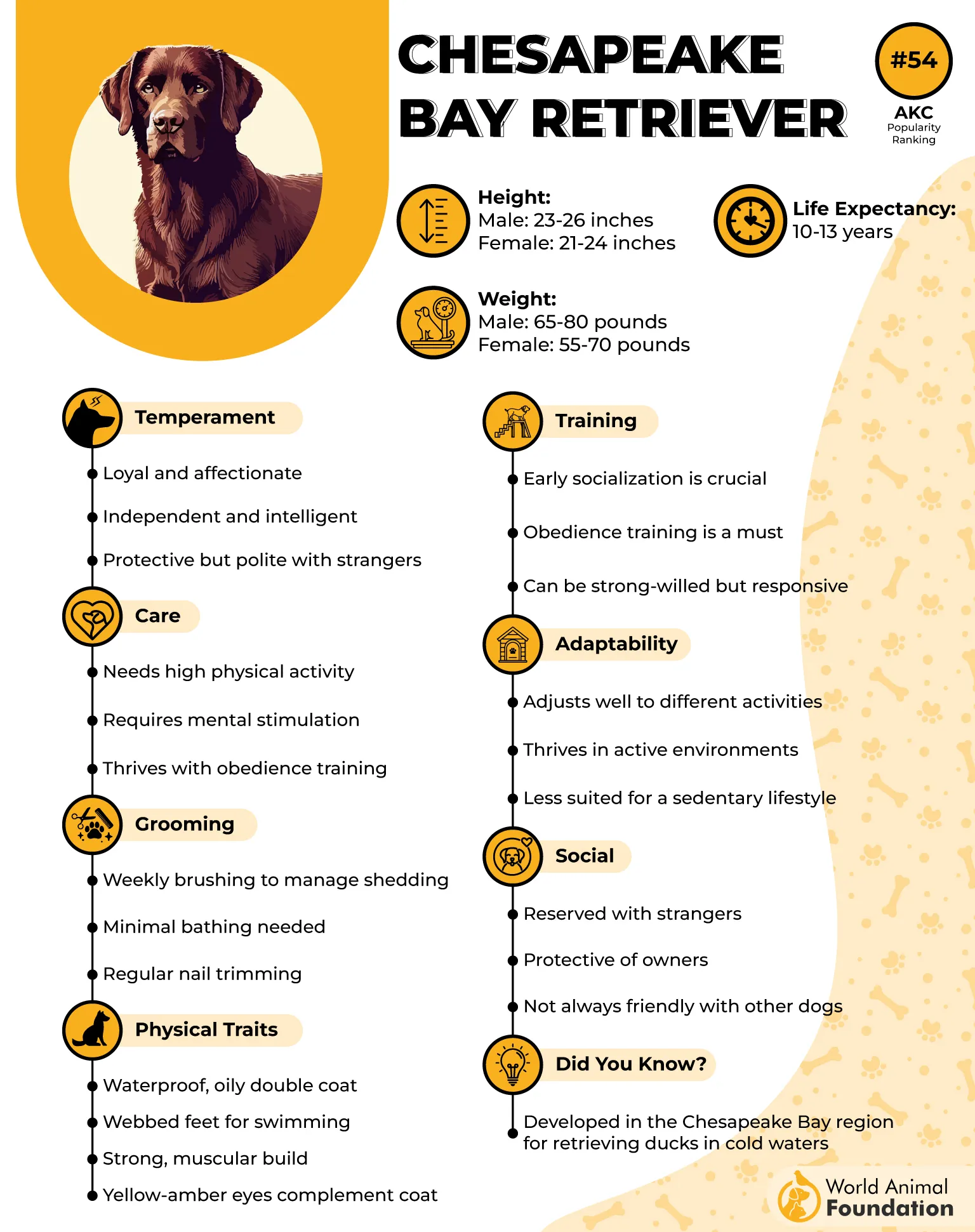
Unique Traits
Chesapeake Bay Retrievers feature a dense double coat, an oily, wavy outer layer, and a woolly undercoat that insulates them against icy winds and frigid waters. Their coat is so effective that it resists water penetration, helping them stay warm during long retrievals.
These medium to large dogs are well-balanced and athletic, with a deep chest, broad shoulders, and large, expressive yellow-amber eyes. Their coats come in solid earth tones like dark brown, sedge, or dead grass, blending in seamlessly with marshy landscapes.
Fact: Chessies trace their lineage back to web-footed breeds like the Newfoundland, contributing to their powerful swimming capabilities.
5. Otterhound
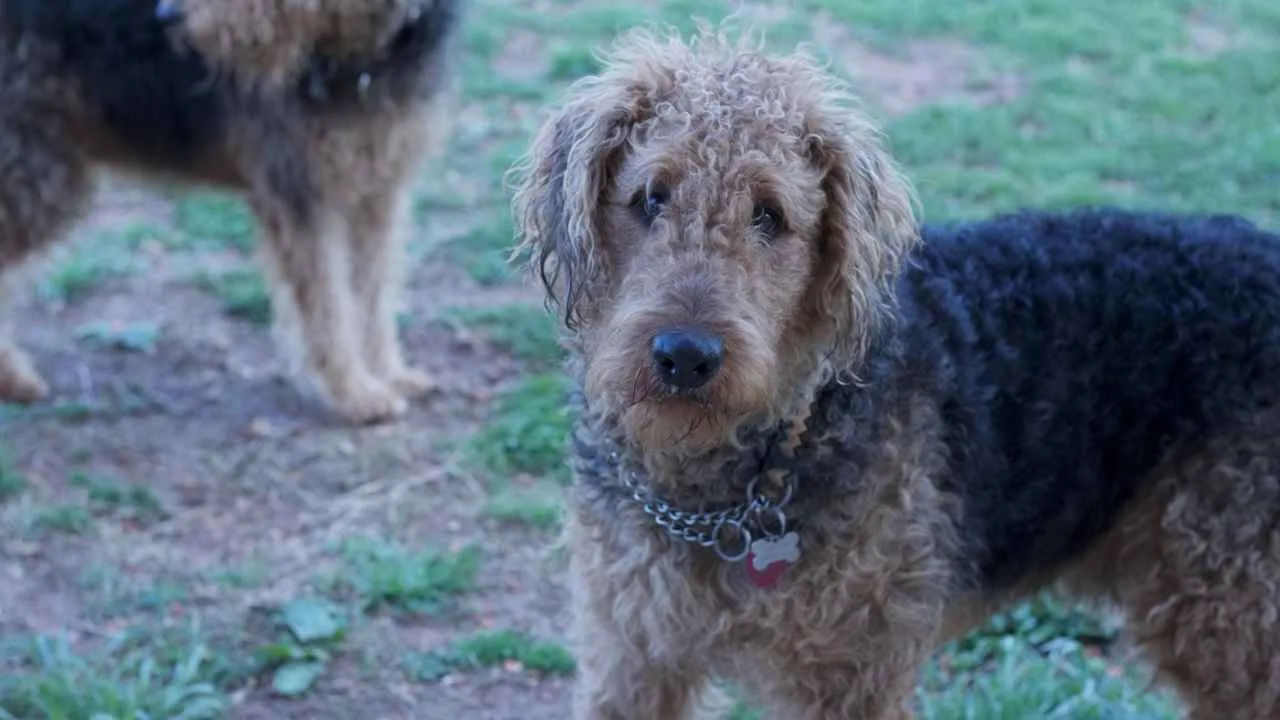
They were bred in medieval Britain to pursue otters both on land and in water. This rare and noble breed has webbed feet that make it a strong, agile swimmer, perfect for navigating rivers and streams.
Britannica states that the Otterhound is a dog breed that was first documented in the 14th century. Originally developed to track and flush otters from waterways, these dogs have evolved into affectionate, playful companions, while still retaining their natural aquatic talents.
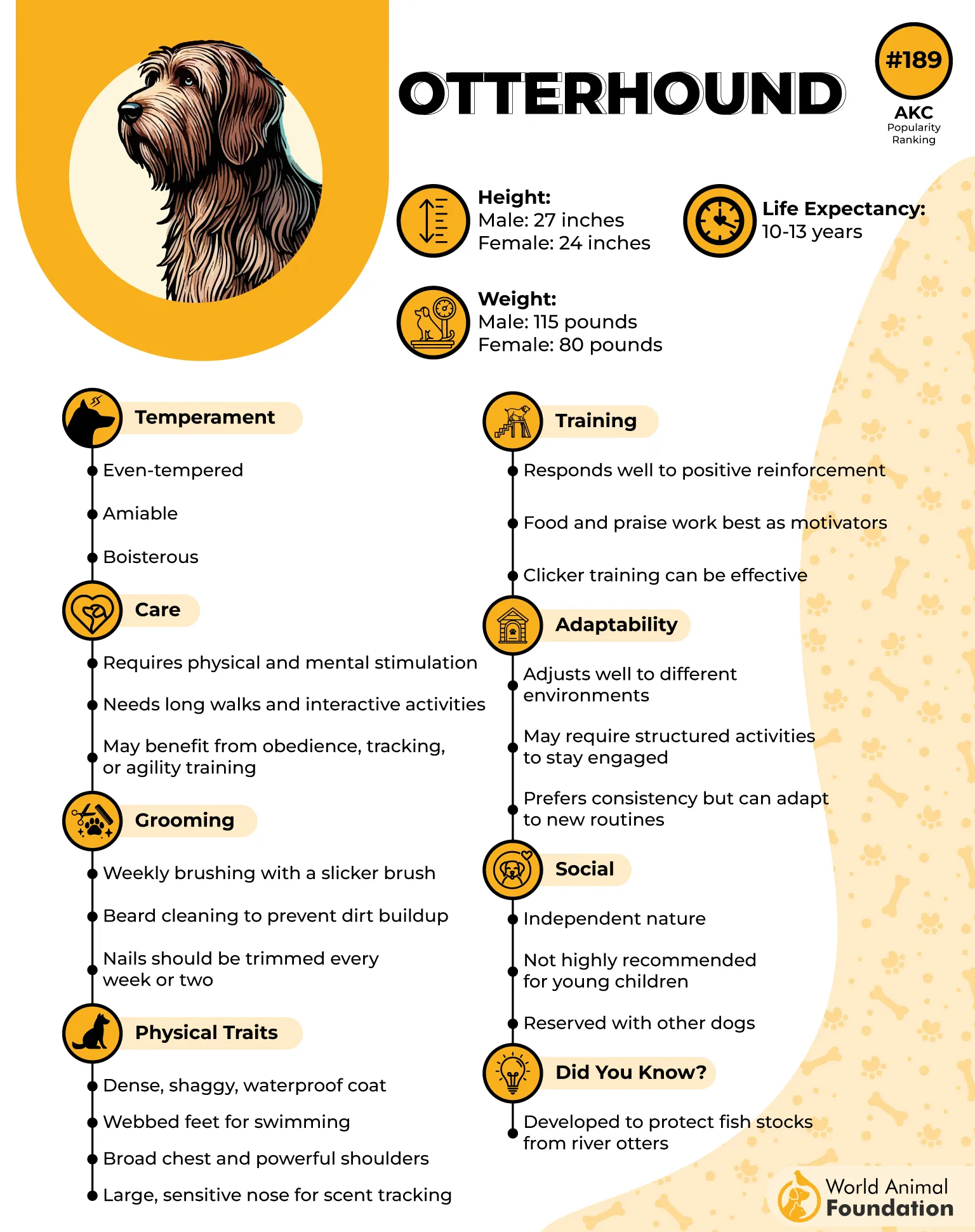
Unique Traits
Otterhounds are known for their shaggy, water-resistant double coat, which helps regulate body temperature during long swims. Their broad head, expressive eyes, and pendulous ears give them a distinctive look, while their large, webbed feet provide exceptional traction in wet environments.
Standing 24 to 27 inches tall and weighing between 80 and 115 pounds, these dogs are built for endurance. Their deep voice, strong scent-trailing instincts, and friendly demeanor round out a truly unique breed.
Fact: Otterhounds were originally bred in England for otter hunting, and their webbed feet and water-repellent coat made them perfectly suited for aquatic work.
6. Dachshund

Despite their compact size and famously elongated frame, Dachshunds are unexpectedly equipped with webbed feet, though not for swimming like many other breeds. Bred in Germany to pursue burrowing prey such as badgers, Dachshunds used their paddle-like paws for efficient digging and navigating narrow tunnels. The webbing between their toes gives them increased surface area and traction, perfect for clawing through soil during a hunt.
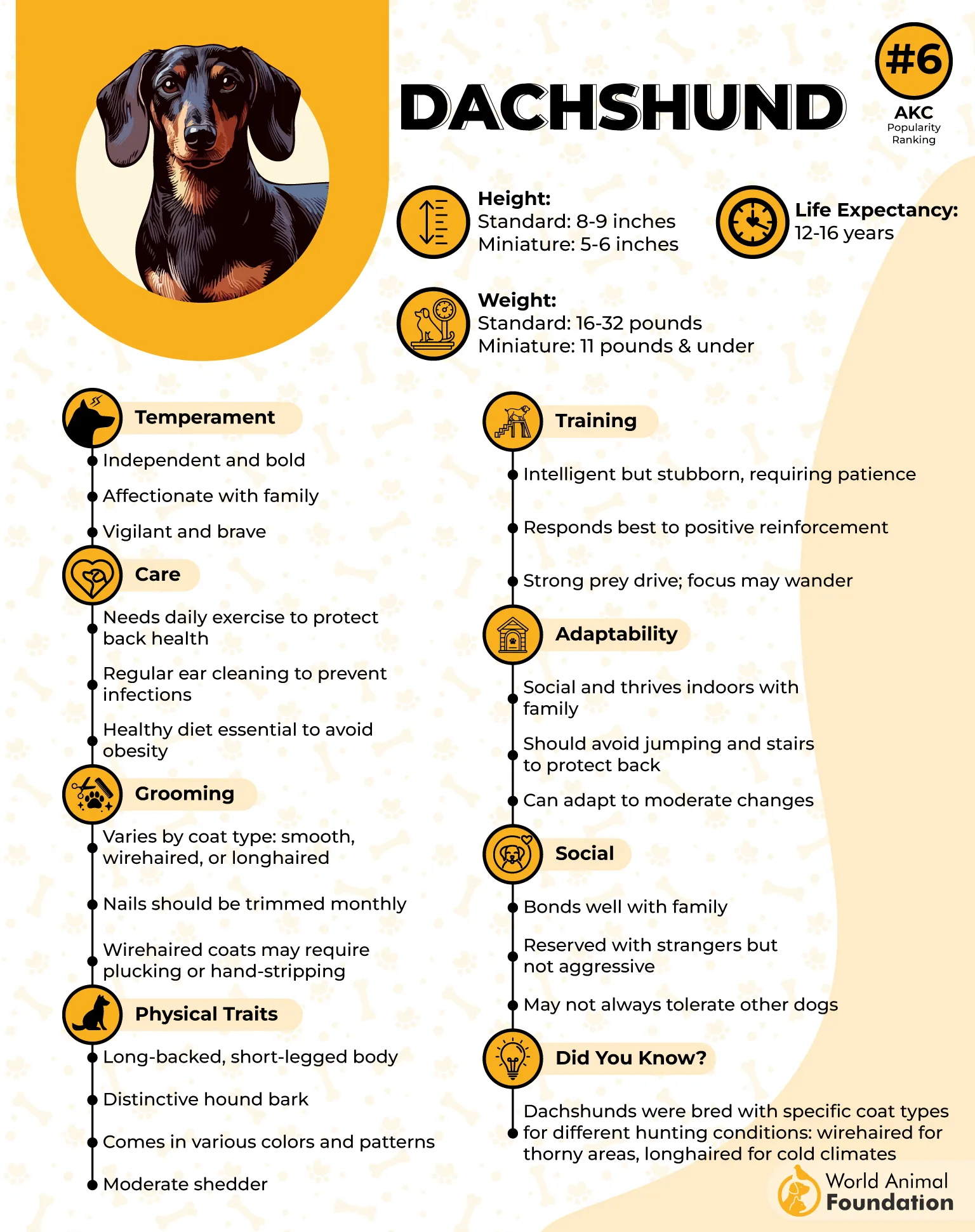
Unique Traits
Dachshunds come in standard and miniature sizes, with coat variations including smooth, longhaired, and wirehaired. Their deep chests, short yet strong legs, and alert expressions define their bold appearance. Though not natural swimmers, some Dachshunds may enjoy splashing around in shallow water, where their webbed feet give them a slight boost.
These dogs are playful, determined, and scent-driven, making them excellent participants in tracking games and barn hunts. With their keen sense of smell and strong prey drive, they thrive when allowed to explore safely on leash or in enclosed spaces.
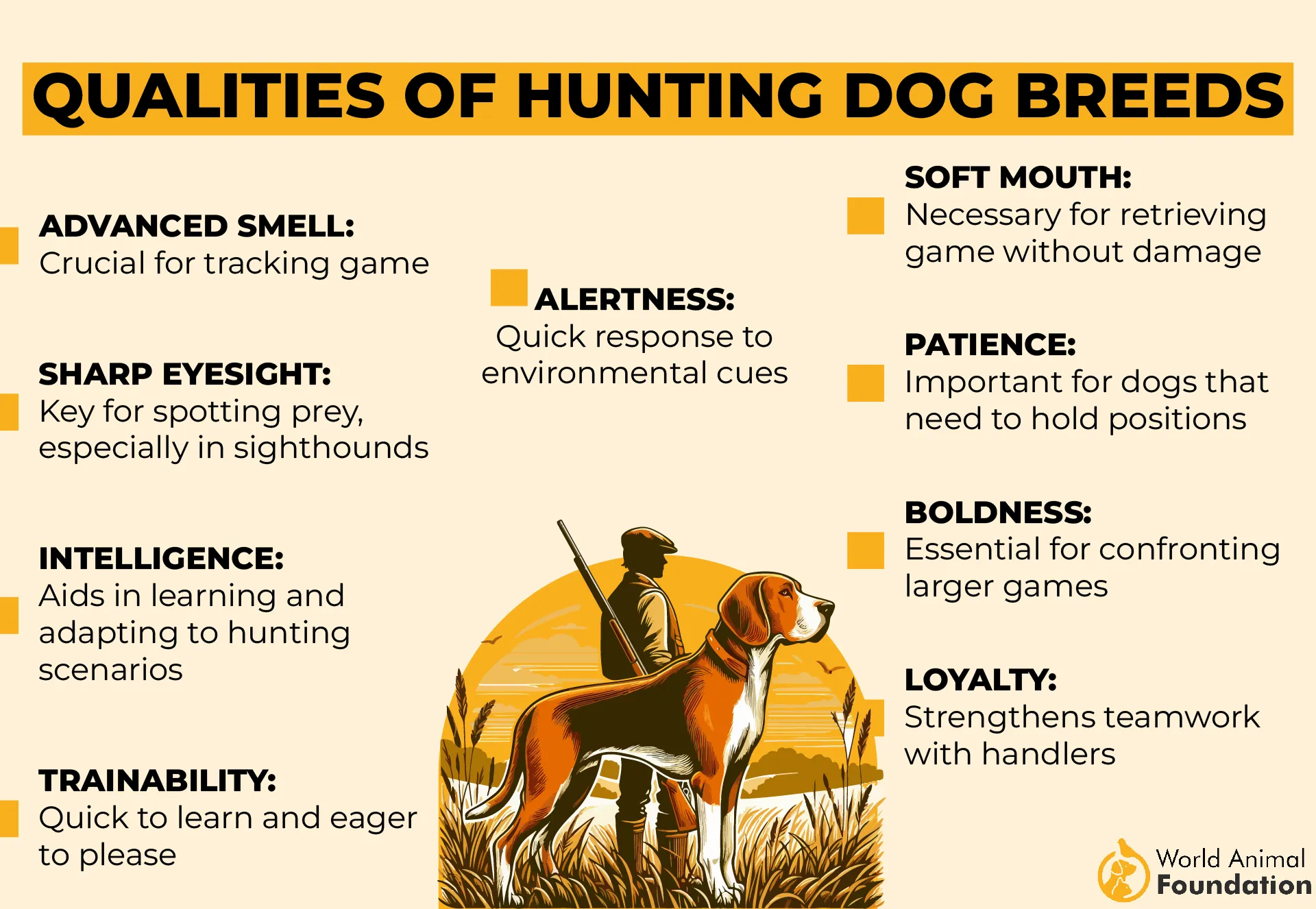
Fact: Dachshunds’ webbed feet were primarily developed for digging, not swimming, enabling them to chase and corner burrowing animals like badgers deep underground.
7. Weimaraner
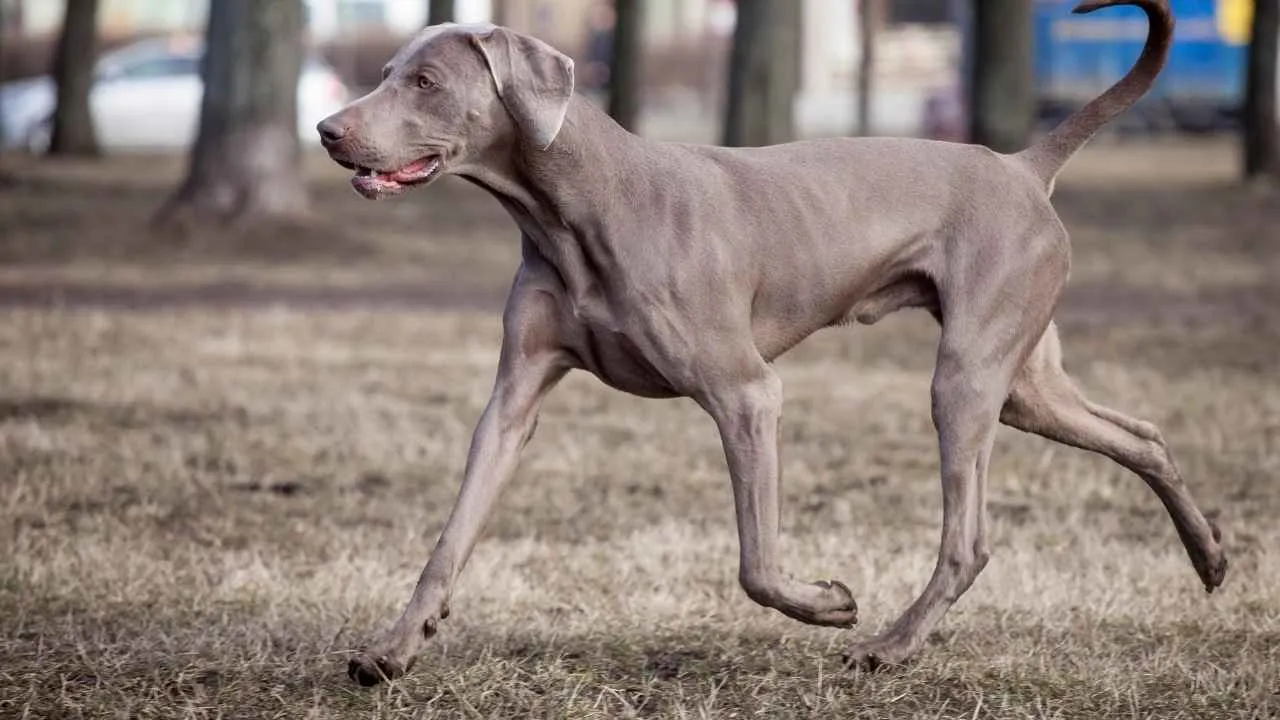
Renowned for their sleek, silver coats and aristocratic appearance, Weimaraners were originally bred for big-game hunting in Germany. Their name might not immediately scream “water dog,” but their webbed feet tell a different story.
Designed for traversing wetlands, marshes, and lakes, their webbing allows them to move with agility through both water and muddy terrain. These graceful canines are not only land sprinters but also powerful swimmers who rarely resist a splash when they see a body of water.
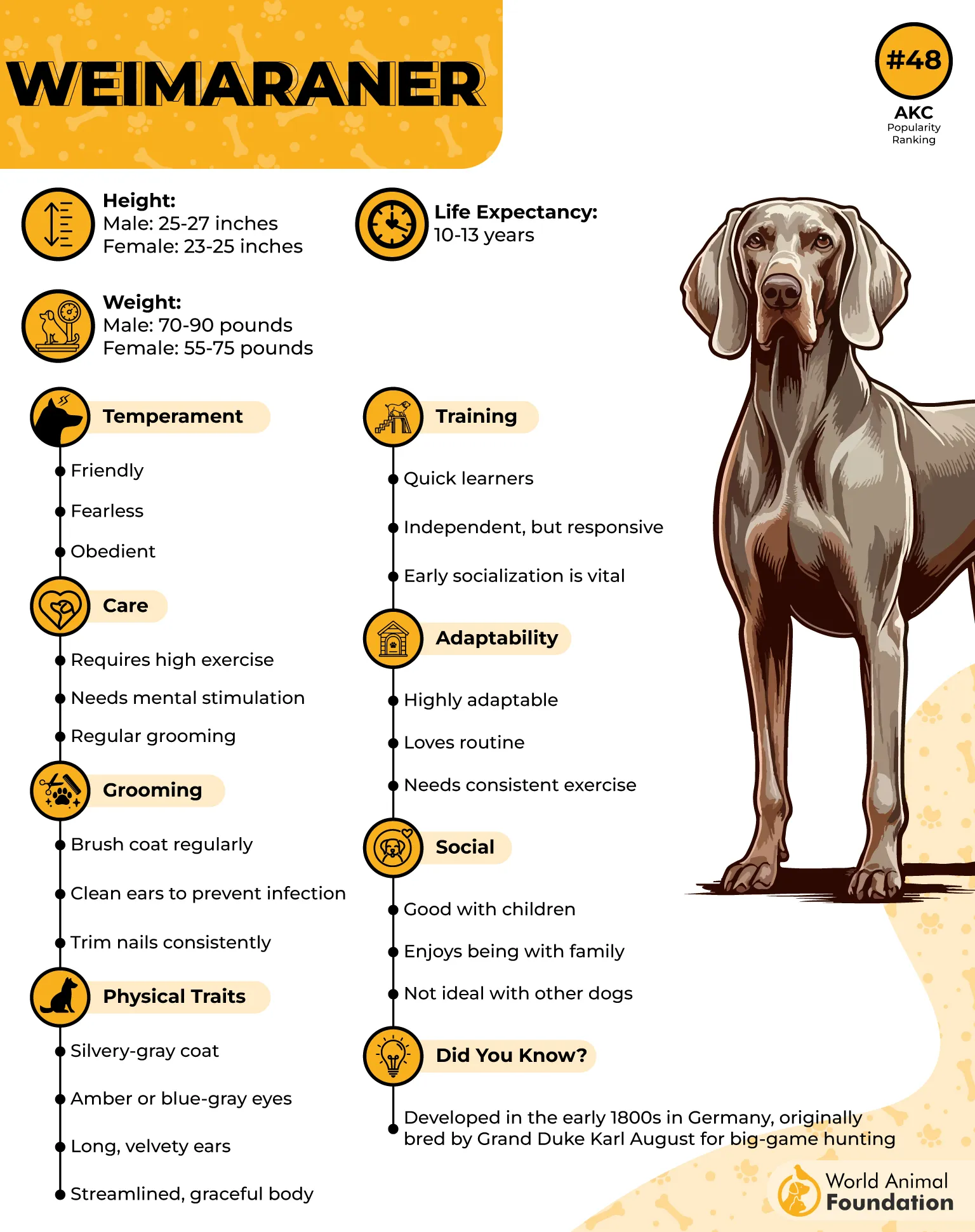
Unique Traits
Nicknamed the “grey ghost” for their silvery coat and hauntingly pale eyes, Weimaraners are striking in both looks and behavior. Their dog’s toes are arched, and prominent webbing between the feet supports excellent balance and swim control, which makes them excel in water-based outdoor activities.
They typically stand 23 to 27 inches tall and weigh between 55 and 90 pounds, requiring regular exercise and mental stimulation. Intelligent and energetic, they thrive on companionship and active routines.
Fact: Weimaraners were once a closely guarded secret in Germany, only becoming known internationally in the 1930s.
8. German Shorthaired Pointer
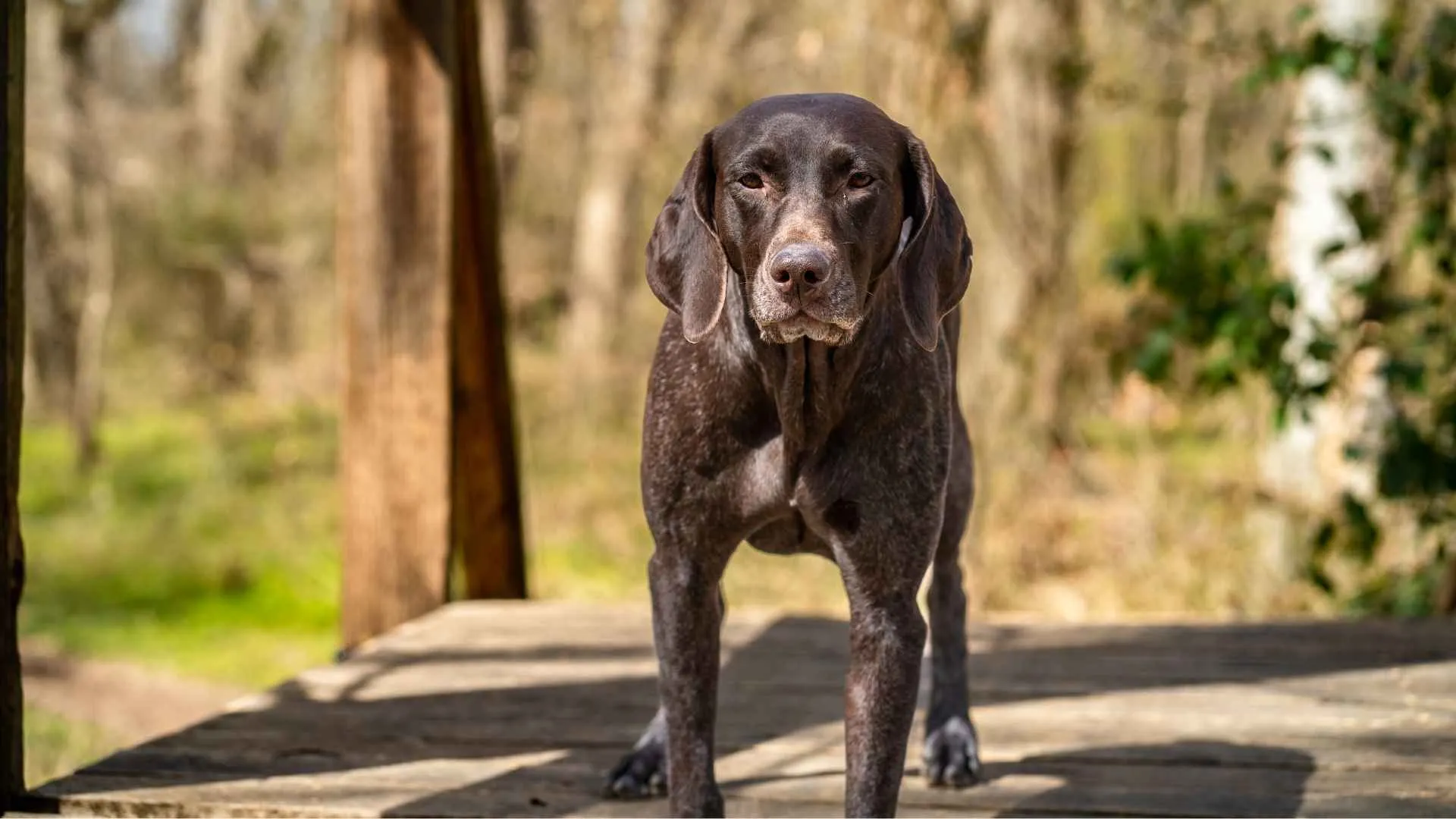
The German Shorthaired Pointer (GSP) is an agile and powerful breed renowned for its versatility in the field and water. Developed in Germany in the late 1800s as a multi-purpose hunting companion, the GSP excels at pointing, trailing, and retrieving game across both dry land and aquatic environments.
A standout feature of the breed is its webbed feet, which aid greatly in swimming, making them naturals when it comes to navigating rivers, ponds, or marshes in pursuit of fowl.
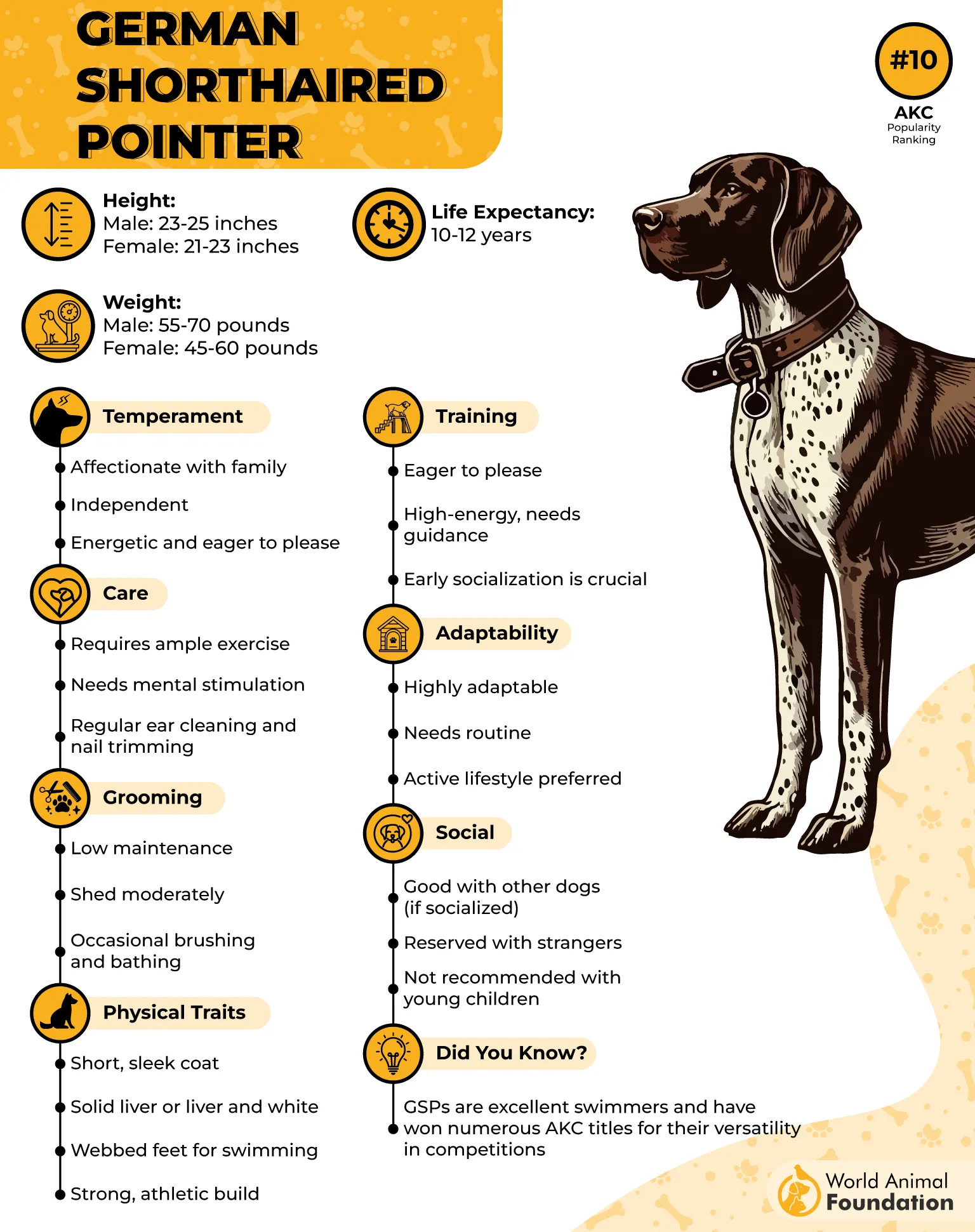
Unique Traits
These web-footed hunting dogs are built for endurance, boasting a sleek and muscular frame. Their short, dense coat allows for quick drying, while their boundless energy and high intelligence demand regular exercise and mental stimulation.
GSPs are affectionate and loyal, thriving in active households, but may be too energetic for novice dog owners. Their enthusiasm for water, paired with their athleticism, makes them exceptional aquatic retrievers.
Fact: All German Pointers, including the GSP, have naturally webbed feet that enhance their swimming ability, ideal for retrieving game in water-based hunting.
9. Nova Scotia Duck Tolling Retriever
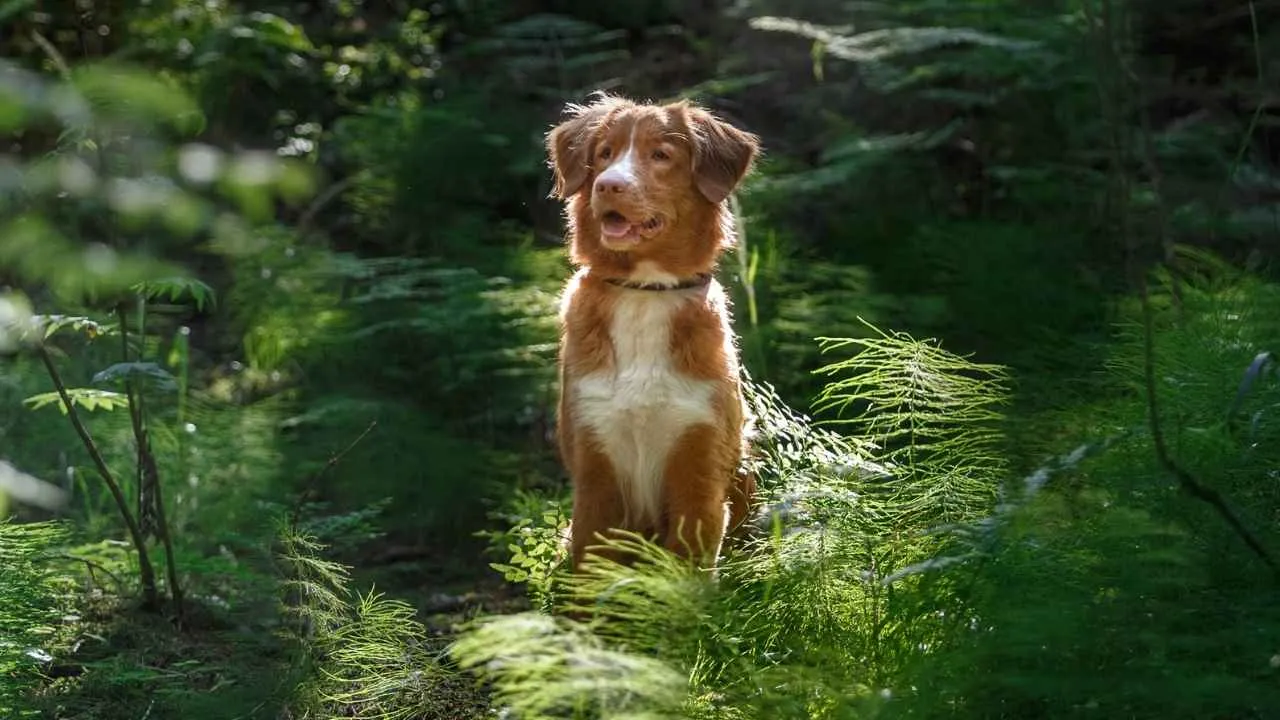
The Nova Scotia Duck Tolling Retriever, often simply called the “Toller,” may be the smallest of the retriever group, but it’s packed with energy, intelligence, and a love for water.
Originally bred for luring and retrieving waterfowl, these medium-sized dogs are agile swimmers with strong webbed feet that allow them to move quickly and efficiently through water. Their athleticism and natural instincts make them highly skilled at their intended task, and a joy to watch in action.
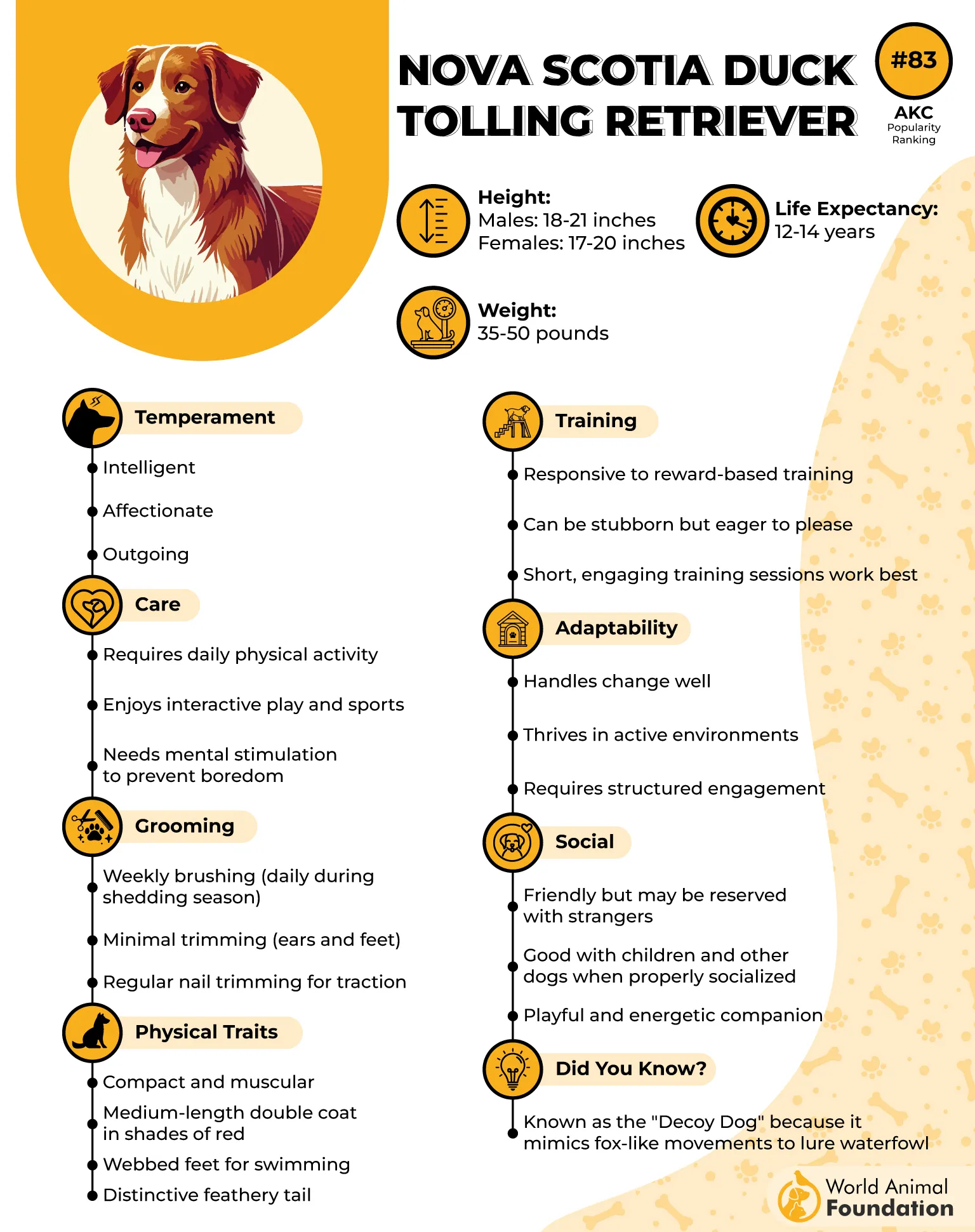
Unique Traits
Tollers are known for their affectionate, alert, and determined personalities. While they may be initially cautious around strangers, they quickly warm up, especially when they feel secure in their environment.
Their webbed feet, along with their muscular build and water-repellent coat, give them the ability to retrieve game even in challenging aquatic conditions. Standing 17 to 21 inches tall and weighing between 35 and 50 pounds, these dogs are compact yet powerful swimmers.
Fact: The Nova Scotia Duck Tolling Retriever uses its webbed feet for both agility in swimming and efficient waterfowl retrieval, living up to its name and sporting heritage.
10. American Water Spaniel
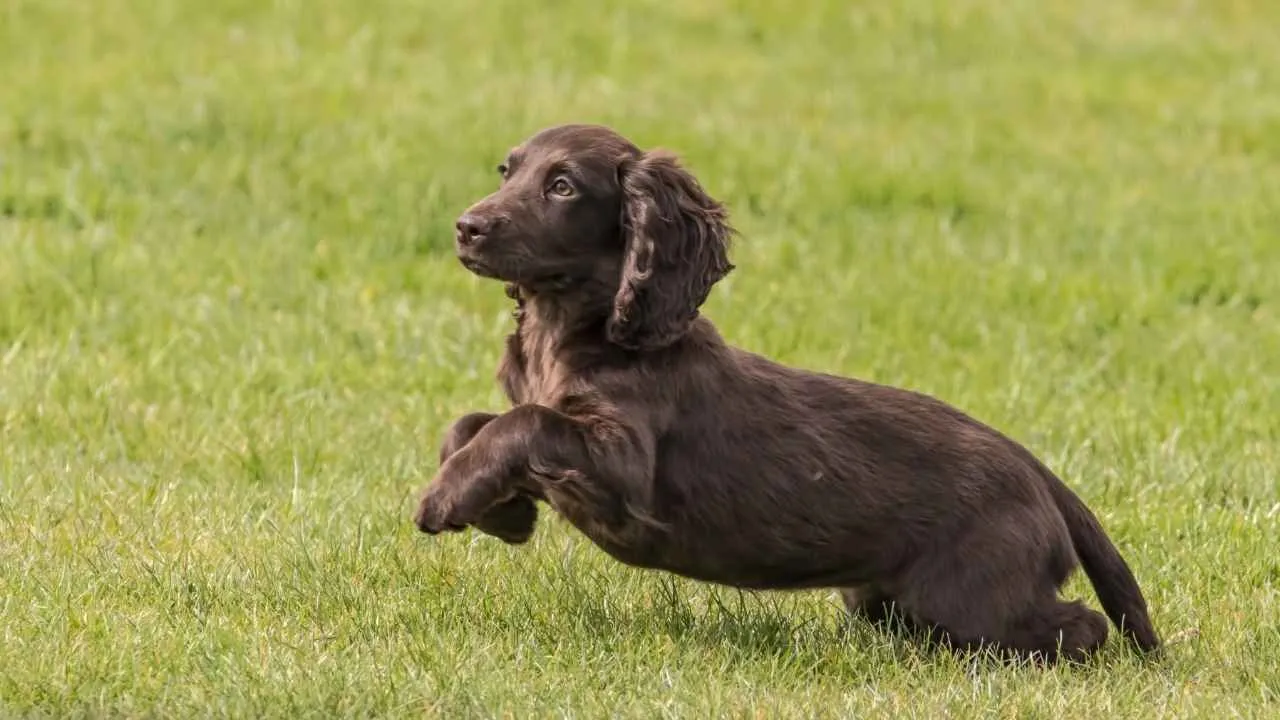
The American Water Spaniel was developed to thrive in the damp environments of the Great Lakes region, where their webbed feet proved essential for water retrieval. Bred to fetch game from icy rivers and marshy terrain, these medium-sized dogs combine stamina with smarts, making them perfect companions for active outdoorsy families.
Their love of water is matched by a desire to stay engaged, whether that’s swimming, playing fetch, or even trotting alongside a bike.
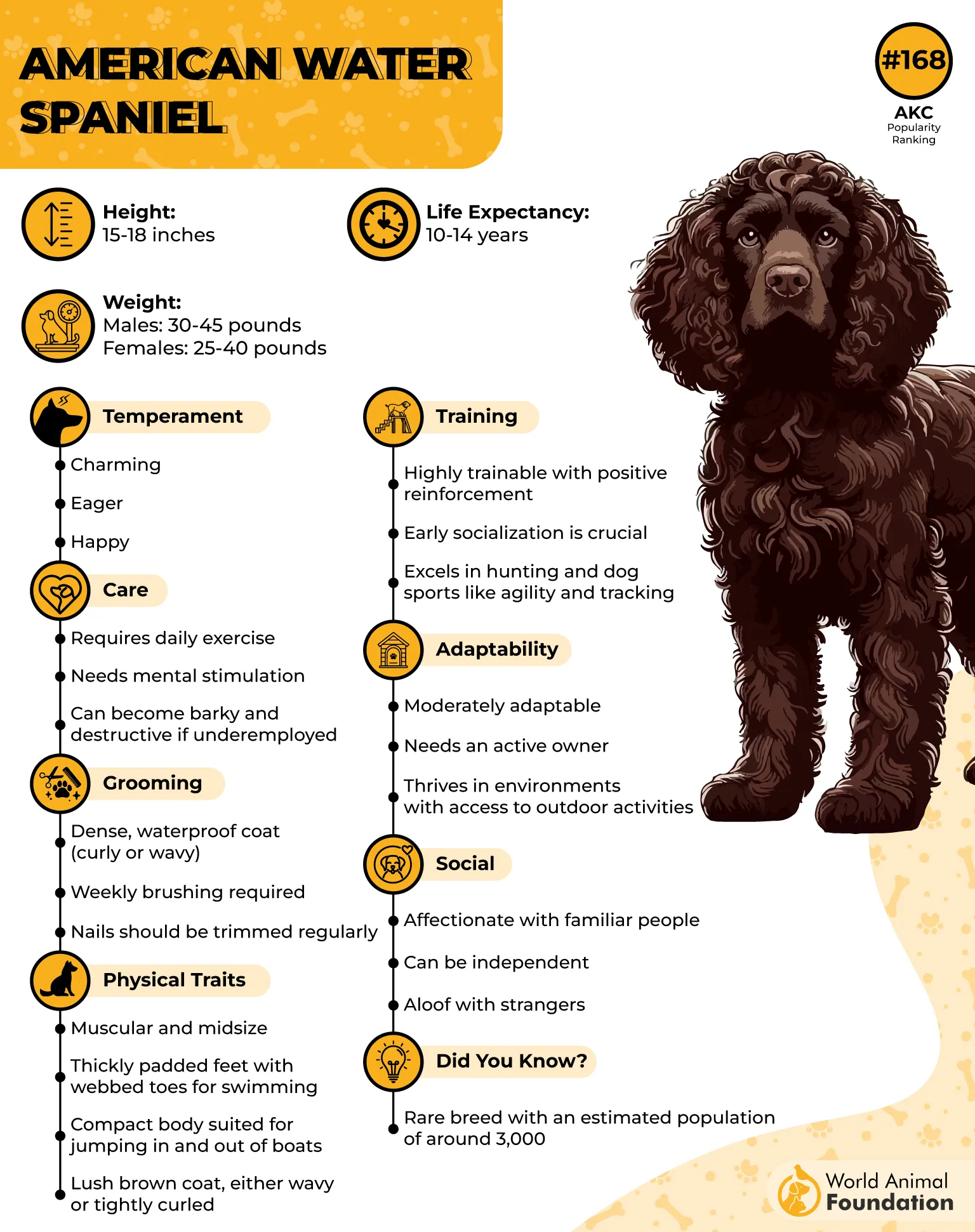
Unique Traits
American Water Spaniels are equipped with curly, water-repellent, thick coats that help insulate them in frigid conditions. These dogs have webbed feet, which give them remarkable traction and swimming ability, allowing them to move smoothly through water or soft ground. To remain mentally balanced and avoid destructive behavior, this breed needs daily exercise and stimulation.
Fact: In 1985, the American Water Spaniel was officially designated as the state dog of Wisconsin, honoring its deep roots and working legacy in the region.
Conclusion
Dogs with webbed feet bring more than just charm; they’re purpose-built companions, especially in water-loving households. From retrieving in icy lakes to excelling in modern dog sports like dock diving, these breeds embody versatility and athleticism. While breeds like the Irish Water Spaniel and American Water Spaniel have a long history of retrieving waterfowl, others like Newfoundland dogs are known for lifesaving instincts and unmatched strength in water rescues. Their specialized feet, thick coats, and strong builds make them ideal for outdoor adventures, especially those involving lakes, rivers, or coastal settings.
Though not every pup is born a duck dog, breeds such as the German Wirehaired Pointer possess the drive and webbed paws needed to thrive in both water and field environments. These unique features aren’t exclusive to just a handful; other dogs may also display partial webbing, giving them a boost in swimming ability. Whether you’re looking for a hunting companion or a canine who’ll keep up on water-based outings, web-footed breeds are a natural fit.


